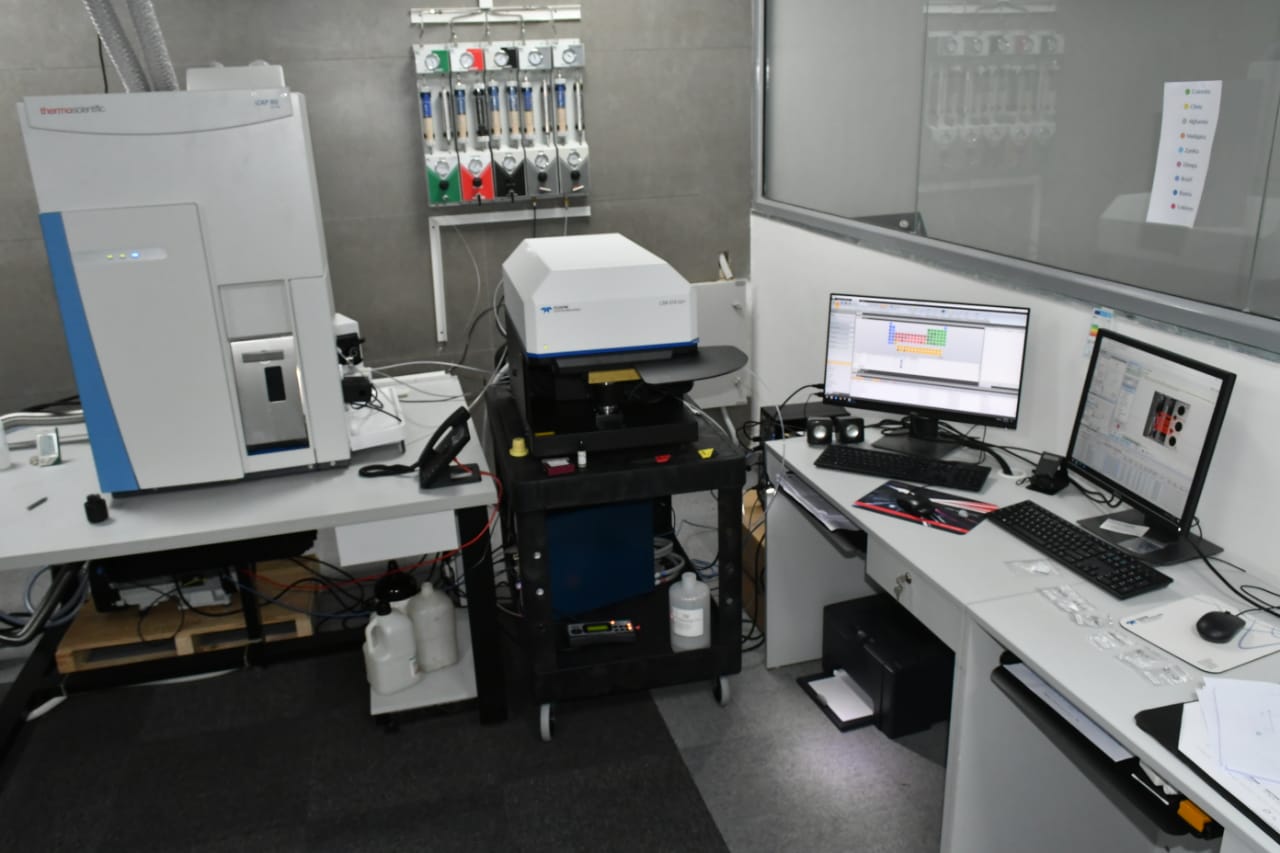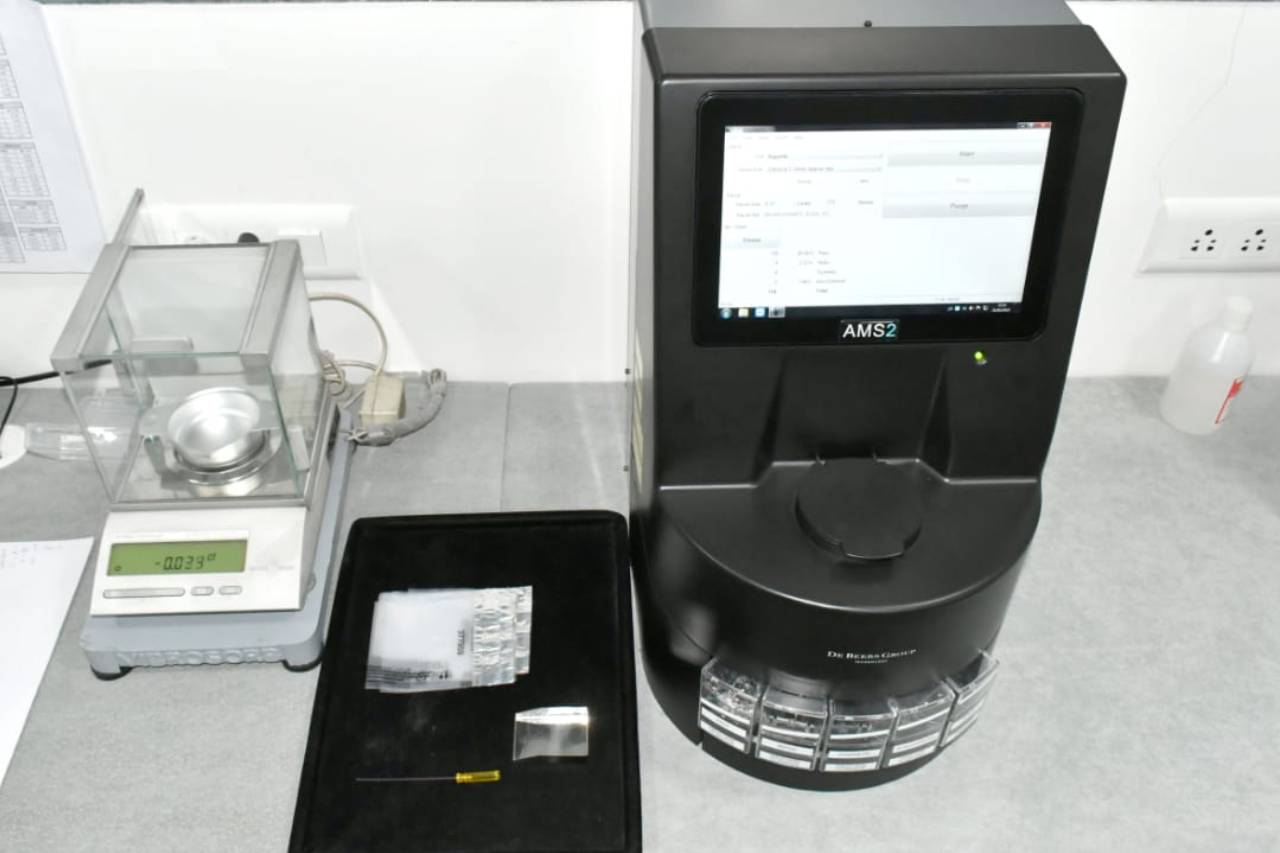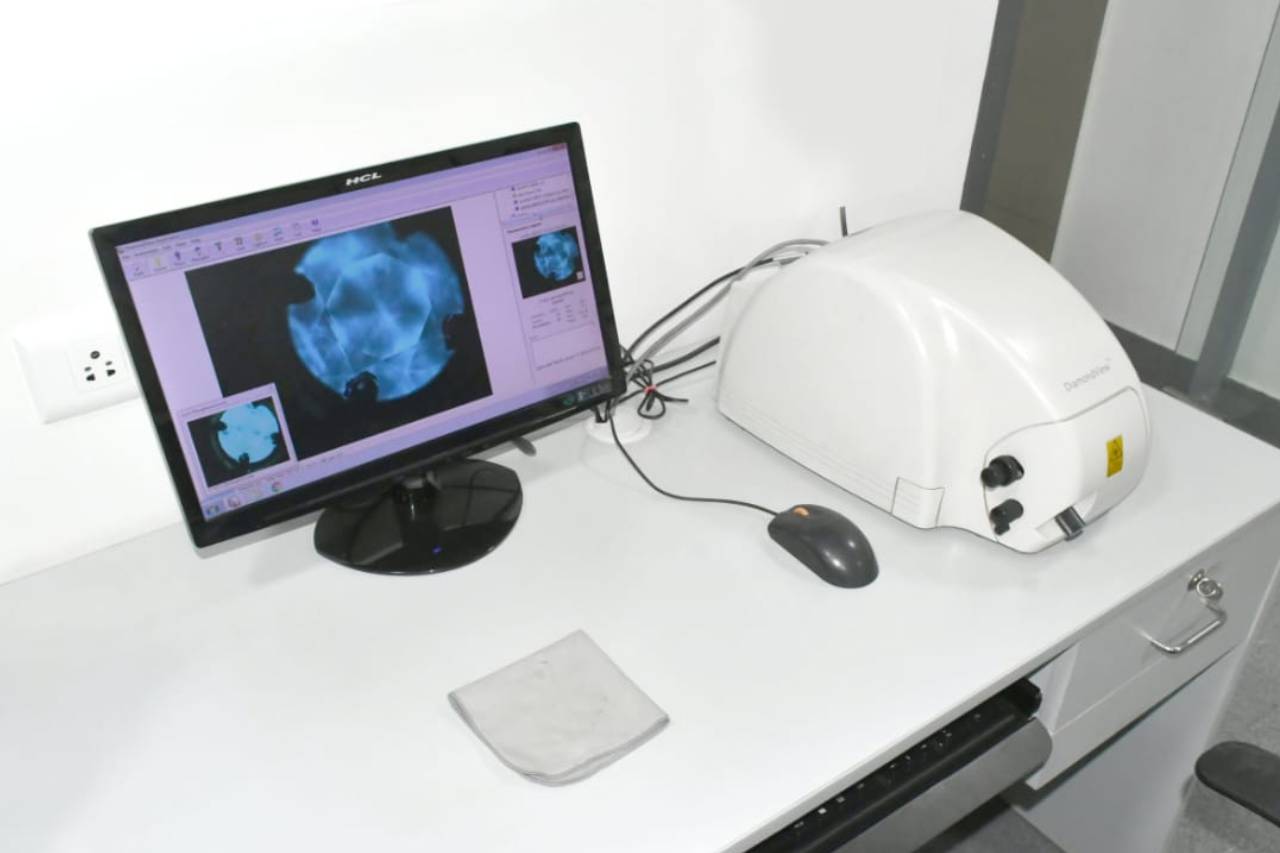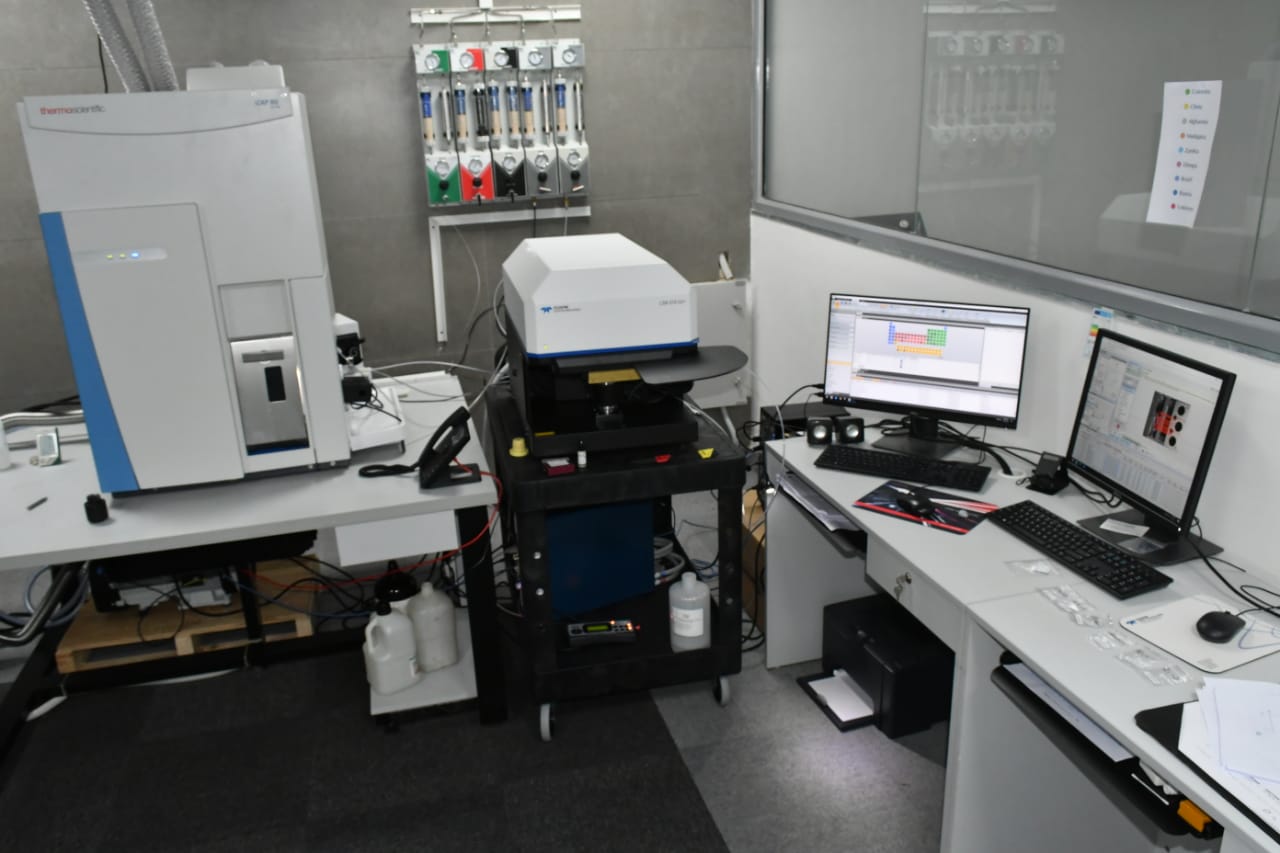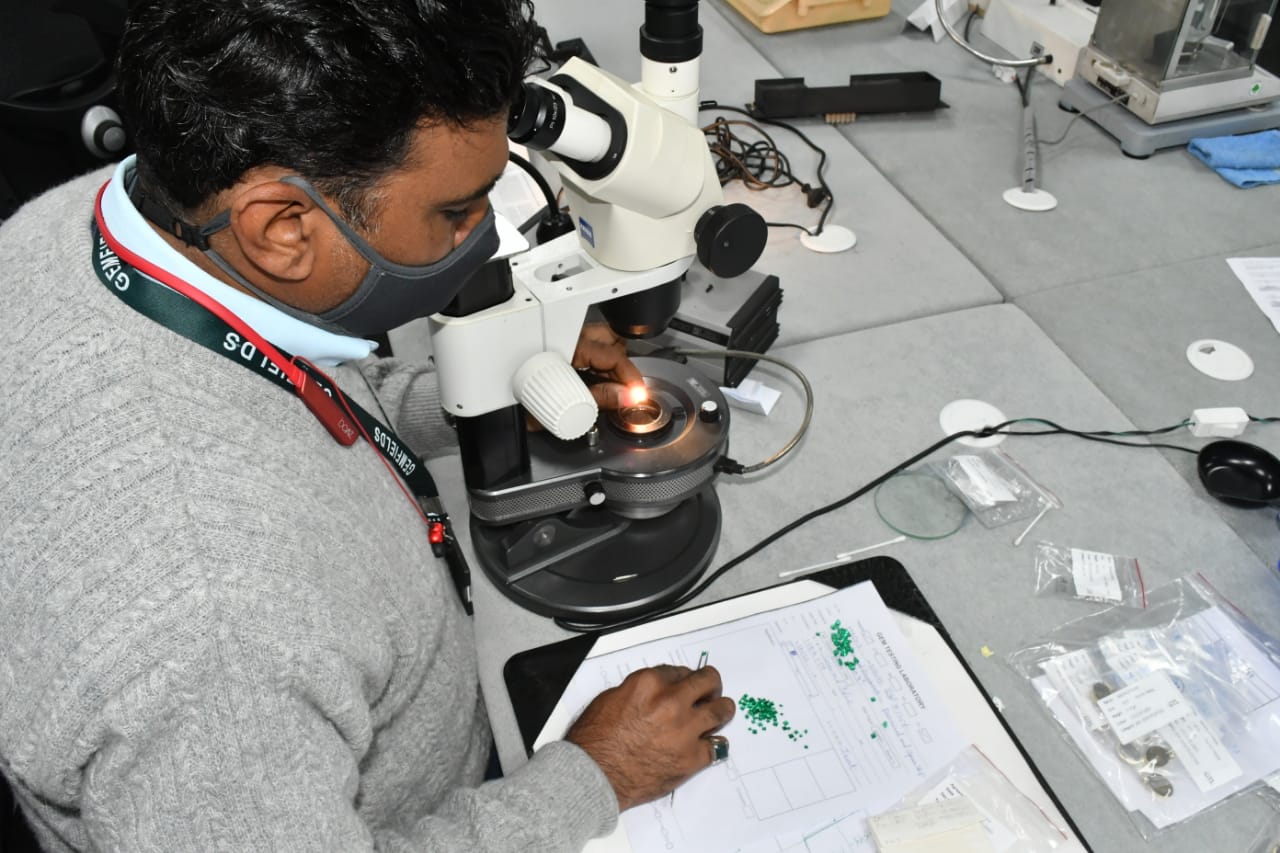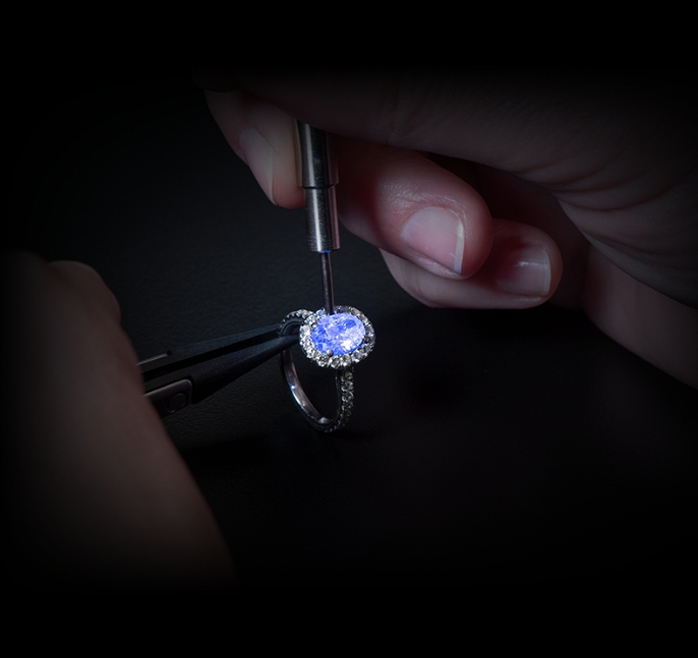Jaipur
About
A Gem Testing Laboratory was set up in Jaipur – the hub of coloured gemstones, by GJEPC in 1972, with the objective of supporting the gem & jewellery industry through technological back-up. Since then GJEPC-GTL has provided gemmological services to both domestic as well as overseas clients. Taking this legacy into the future, GJEPC-GTL is now merged with the Indian Gemmological Institute – Gem Testing Laboratory, Delhi – another laboratory set-up by the GJEPC in the year 1978, to form IIGJ-Research & laboratories Centre.
With the merger of the two oldest laboratories in the country, IIGJ-RLC has now emerged as the leading facility in India, offering gemstone and diamond certification services to both domestic as well as overseas clients.
The main functions of IIGJ-RLC remain the same as before, namely, gemstone and diamond certification along with research & development of techniques for identification of new gem materials, synthetics and treatments. The results of R&D are shared with the world through participating in conferences and publications in various trade and gemmological journals. IIGJ-RLC also acts as an information centre for various research institutions, government departments, etc.
IIGJ-RLC follows the strictest of guidelines to ensure authenticity of reports issued for gemstones and their possible treatments, in the most scientific and reproducible manner possible, through a combination of state-of-the-art analytical techniques and extensive practical skills. This not only provides proper disclosure of the stone, but also ensures public trust in gems and jewellery by preserving the highest standards of integrity, knowledge and expertise.
Analytical Methods
New deposits of well-known gemstones or of some new and unusual gems and minerals are being discovered on a routine basis, which obviously reaches the world gem markets, such as Jaipur. Similarly, new synthetics and treatments are under regular developments and hence, their identification has become more challenging and complicated than ever before. All the reports issued at IIGJ-RLC are based on a thorough research using ‘years of experience’ on the many analytical methods including visual examination with the aid of traditional gemmological tools and sophisticated scientific spectrometers. The gemmologists at IIGJ-RLC have a combined work experience of more than 50 years and each year, thousands of various types of gemstones go through their eyes.
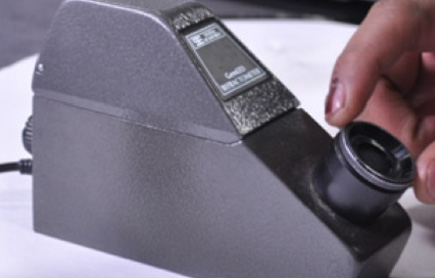
Traditional Gemmological Methods
Traditional gemmological tools and methods play an important role in determining the nature of mineral species, which mainly involve determining the physical (such as specific gravity, hardness, cleavage, etc.) and optical constants (such as optic character, pleochroism, refractive index, birefringence, optic sign, absorption spectrum, fluorescence reactions, etc) and comparing with a table of constants, available in common gemmological texts. These mainly provide qualitative information but still considered as important tools for gem identification. The most commonly tools used are polariscope, dichroscope, refractometer, spectroscope, UV lamp and specific gravity measurements
These methods are still widely used in most of the gemmological labs, but they fail to provide answers to many questions raised by the advanced and complex methods of treatments and synthesis of gemstones. They, however, nicely complement the sophisticated and advanced analytical tools, which have now become essential components of a modern gemmological laboratories, such as IIGJ-RLC.
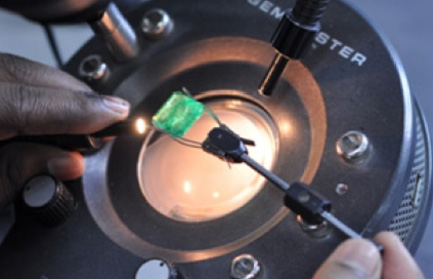
Microscopy
The microscope remains the most important tool in gem identification – it is the ‘heart’ of a gemmological lab. Detailed and careful observations made under a microscope help a gemmologist to decide on many aspects of a gem regarding its type, origin, treatments, etc. and assists other techniques in validating the data. At the IIGJ-RLC, every analysis is started with a detailed microscopic observation, before the results are validated through spectrometric techniques.
Some of the sophisticated methods of analysis used at the IIGJ-RLC include Fourier Transform Infrared (FTIR) Spectrometry, Laser Raman Spectrometry (LRS), Energy Dispersive X-Ray Fluorescence (EDXRF) Spectrometry, Ultraviolet- Visible- Near Infra-Red (UV-Vis-NIR) Spectrometry, Ultra-Violet imaging, X-ray imaging (2D/3D) and Laser Ablation-Inductively Coupled Plasma-Mass Spectrometry (LA-ICP-MS). IIGJ-RLC is the first and only gemmological laboratory to house this highly sophisticated spectrometric technique, which has the capability of performing chemical fingerprinting of gemstones up to parts per billion (ppb) levels.
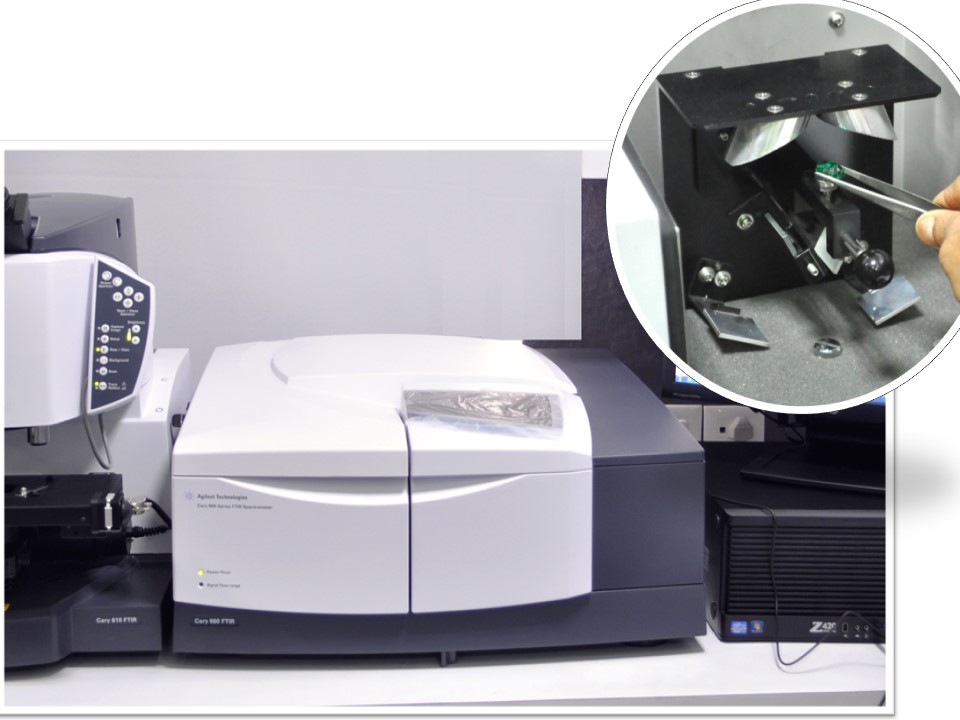
Fourier Transform Infrared (FTIR) Spectrometer
Due to a typical crystal structure with specific pattern of molecular arrangement, particular gemstones or minerals tend to produce a characteristic absorption and transmission patterns on interaction with infra-red light.
IIGJ-RLC, Jaipur (formerly, GTL, Jaipur) was the first gemmological laboratory in the country to employ FTIR for its routine analyses in the year 1998, and since then an extensive database on thousands of samples has been created and put into use in gemmological interpretation. At IIGJ-RLC, FTIR is commonly used to identify unknown gems and minerals by their fingerprint spectral pattern, separate natural and synthetic emeralds, rubies, sapphires, amethysts, etc., determine absence or presence of treatments in rubies, sapphires, emeralds, turquoise, corals, diamonds, etc.
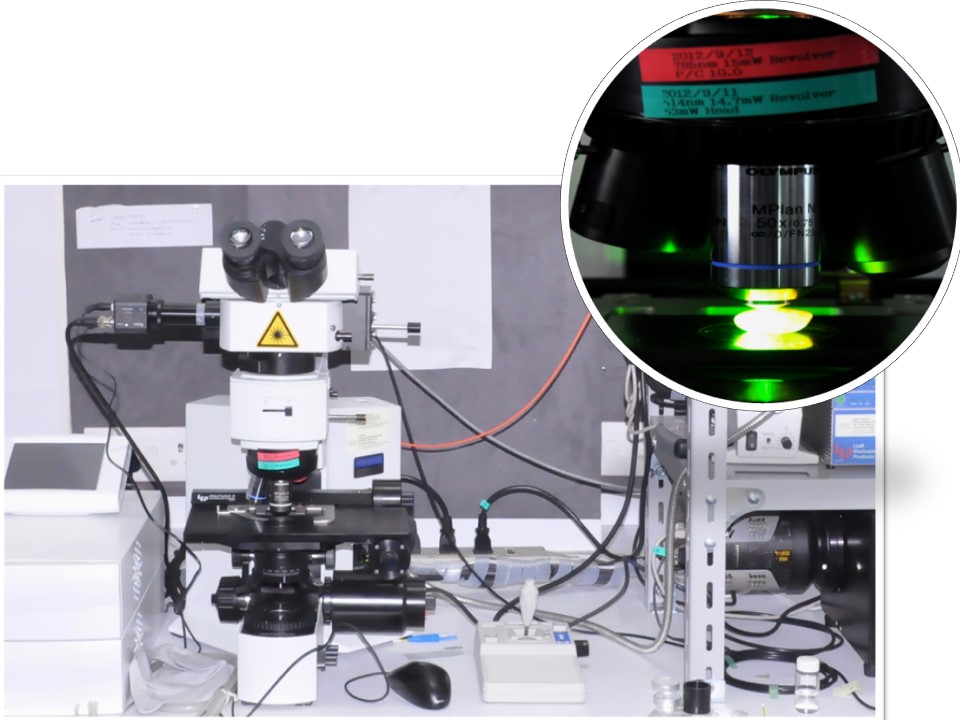
Laser Raman Spectrometer (LRS)
LRS is based on the Raman Effect, produced when a laser strikes a molecule and interacts with its bonds. Some of the light is scattered while some are re-emitted producing a characteristic spectrum, which is a ‘fingerprint’ for a particular substance. The Raman spectrometer housed at IIGJ-RLC is equipped with three lasers, namely, 375nm, 532nm and 685nm has the capabilities of measuring Photoluminescence spectra of diamonds and coloured gemstones, and at temperatures as low as that of liquid nitrogen.
At IIGJ-RLC, Raman spectrometer is commonly used to identify an unknown gem material, or when stones are set in jewellery, such as black diamond and black moissanite, or to determine components of a rock; to detect treatments such as impregnation on turquoise or coral, low-temperature heating in rubies, HPHT in diamonds, fillers in emerald, etc.; or to separate natural from synthetic diamonds.
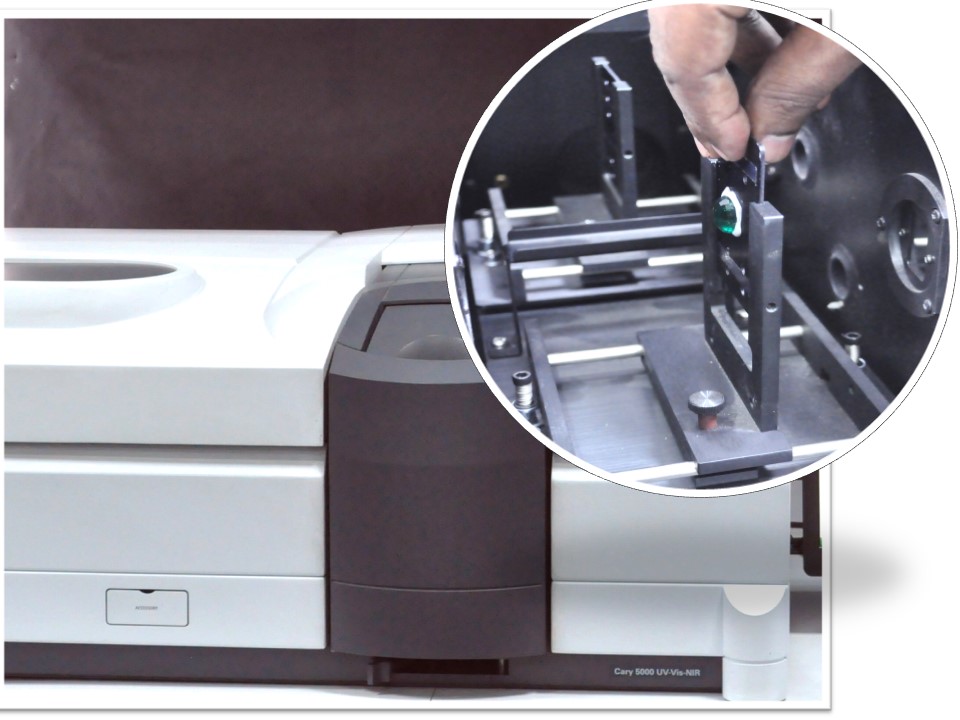
Ultra Violet-Visible - Near Infrared Spectrometer
UV-Vis-NIR spectrometry is based on selective filtering of wavelengths through the sample; the absorbed wavelengths caused due to electron defects or chromophoric elements are displayed in the form of a graph and expressed in comparison with the incident light.
At IIGJ-RLC, UV-Vis-NIR spectrometer is used to identify a gem species / variety, especially in case of separation of emerald from green beryl or ‘cuprian’ tourmaline from ‘non-cuprian’, or the type of garnet; it also helps to differentiate synthetic from natural sapphires or spinels, turquoise or corals their imitations, etc.; it is also very useful in separating treated corals, jadeites, turquoise, diamonds, chalcedonies, etc.
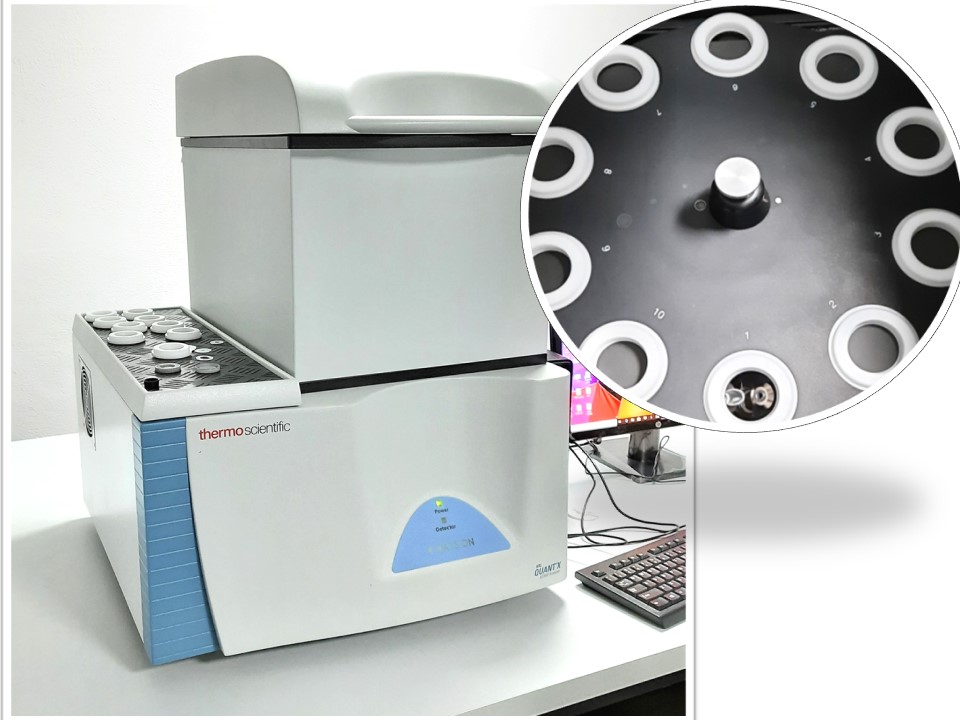
Energy Dispersive X-ray Flouroscene (EDXFR) Spectrometer
X-ray fluorescence spectrometry is used to determine the bulk chemical composition of the samples' surface. When a substance is exposed to x-rays, the electrons of the atoms get excited to the higher energy level and on falling back to the ground state, emit radiations in the form of fluorescence, which is recorded by the detectors. The emitted energy of excited elements is displayed as peaks.
IIGJ-RLC, Jaipur (formerly GTL, Jaipur) has been the first gemmological laboratory in the country to use EDXRF spectrometer in routine certification. EDXRF provides a quick chemical composition of a sample, thereby assisting in separating lookalikes, determination of type of glass-filling in rubies, coatings in tanzanite or diamond, detection of ‘zachery’ treatment in turquoise, separating turquoise or coral from imitations, validating ‘paraiba’ tourmaline, chrysoprase, etc.
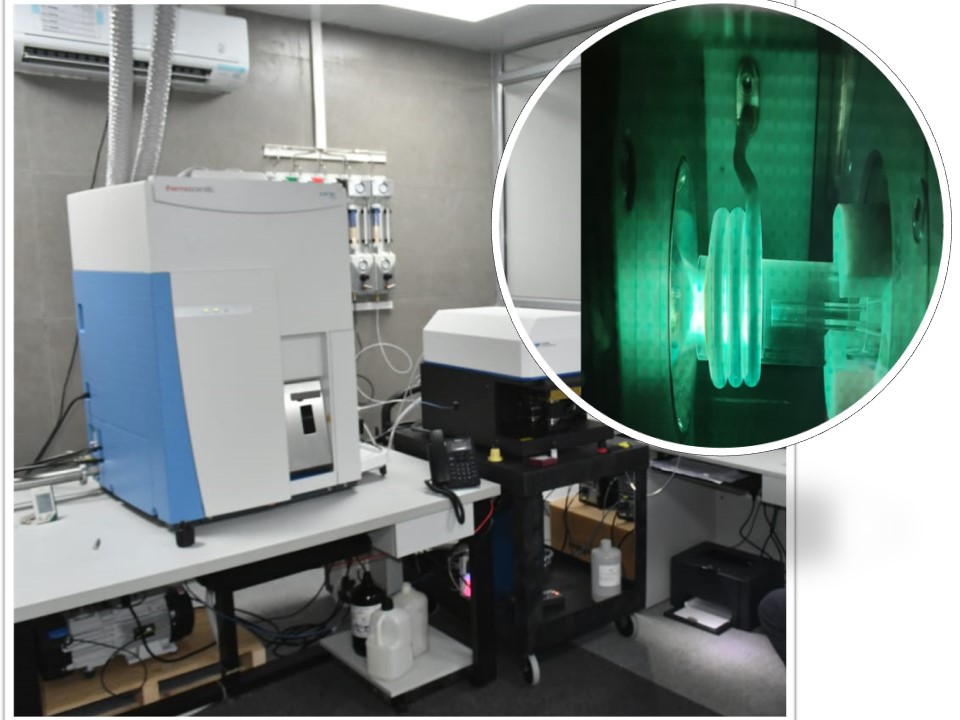
Laser Ablation-Inductively Coupled Plasma- Mass Spectrometer (LA-ICP-MS)
Laser Ablation - Inductively Coupled Plasma - Mass Spectrometer (LA-ICP-MS) is the state-of-the-art technique for the chemical micro-analysis of solid materials. It has a wide range of applications in many different fields of science and industry. In the past couple of years, the importance of LA-ICP-MS to gemstone characterization and identification has grown, as standard analytical techniques have failed to answer few concerns.
LA-ICP-MS helps to study micro-spatial distributions of trace elements and isotopic compositions, from light (helium) to heavy (uranium) elements with rapid or no sample preparation. LA-ICP-MS analyses provide quantitative data for major, minor, and trace elements in the analyzed samples, from which variation diagrams and “chemical element fingerprints” can be established. Such fingerprinting can reveal differences between samples that may be attributed to the geographic origin of the sample or subsequent treatment, such diffusion of beryllium or other light elements
At IIGJ-RLC laser of 213 nm wavelength ablates the sample without cracking or splintering it. The diameter of the laser spot is usually around 50 microns i.e., half the diameter of human hair. During the laser ablation process, the laser pulses release small amounts of the sample from the surface in the form of particles, ions, atoms and molecules. Ablated material transported into the Argon plasma of the mass spectrometer via He-gas current. In the plasma, 60-150 nanometre-sized particles are disintegrated at ~7000°C and ions are created, which can be selectively detected. The mass spectrometer is capable of quasi simultaneous detection of almost all natural elements, including very light elements such as Li, Be, B and Na, which are difficult or impossible to analyse by more traditional chemical analyses such as the X-Ray Fluorescence method. Most elements can be detected at very low concentrations down to sub-ppb (parts per billion) levels, which make this method unchallenged by any other standard analytical instrumentation.
IIGJ-RLC is the first and only gemmological laboratory in the country to house this instrument for gemmological applications, especially, for detailed chemical fingerprinting before issuing reports on origin of rubies, sapphires and emeralds.
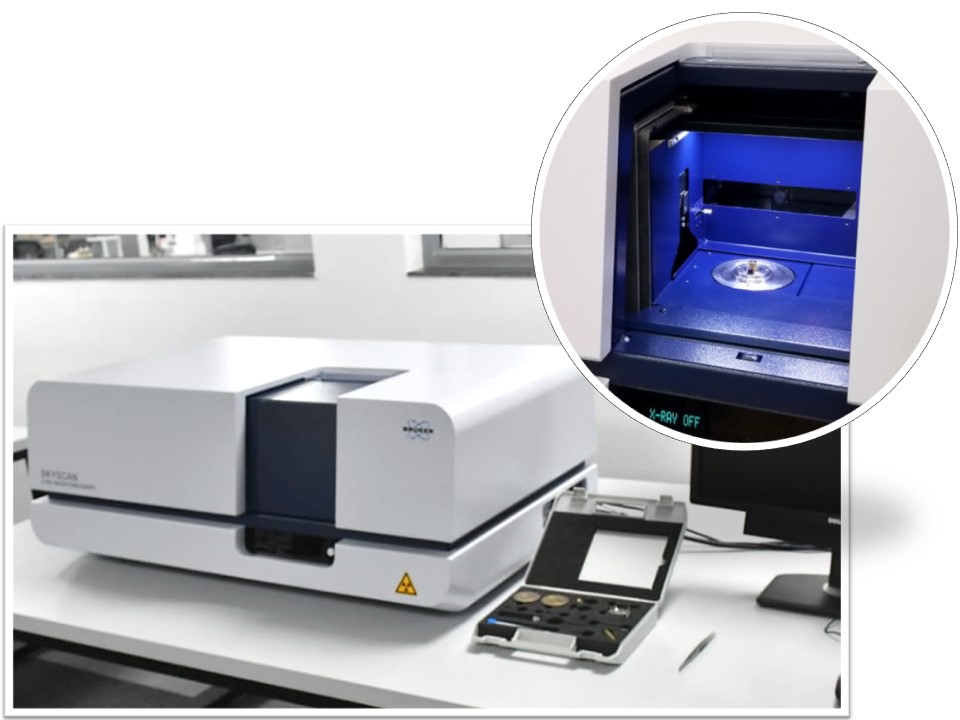
microCT (2D/3D x-ray imaging/radiography)
X-radiography allows non-destructive study of the internal structure of an object, such as pearl, with high spatial resolution by transmitting the high-intensity x-rays through the sample. In recent times, high resolution real‐time micro radiography has evolved as an important tool in gemmological laboratories, especially those offering pearl reports. The service, which is in the pipeline in the next coming months, IIGJ-RLC has already housed this high-resolution microCT system at its Jaipur location. The instrument gives the operator instant images where extremely fine detail can be recorded and zoomed into on a large format high resolution monitor. The immediacy of the imaging achieved in a small fraction of the time allows for multiple images to be taken in many different directions and at varying magnifications, contrast and colour representations on almost any pearl being examined.
IIGJ-RLC is the first and only gemmological laboratory in the country to house this instrument not only for pearl analyses, but also to detect presence of high-RI glass in rubies or diamonds.
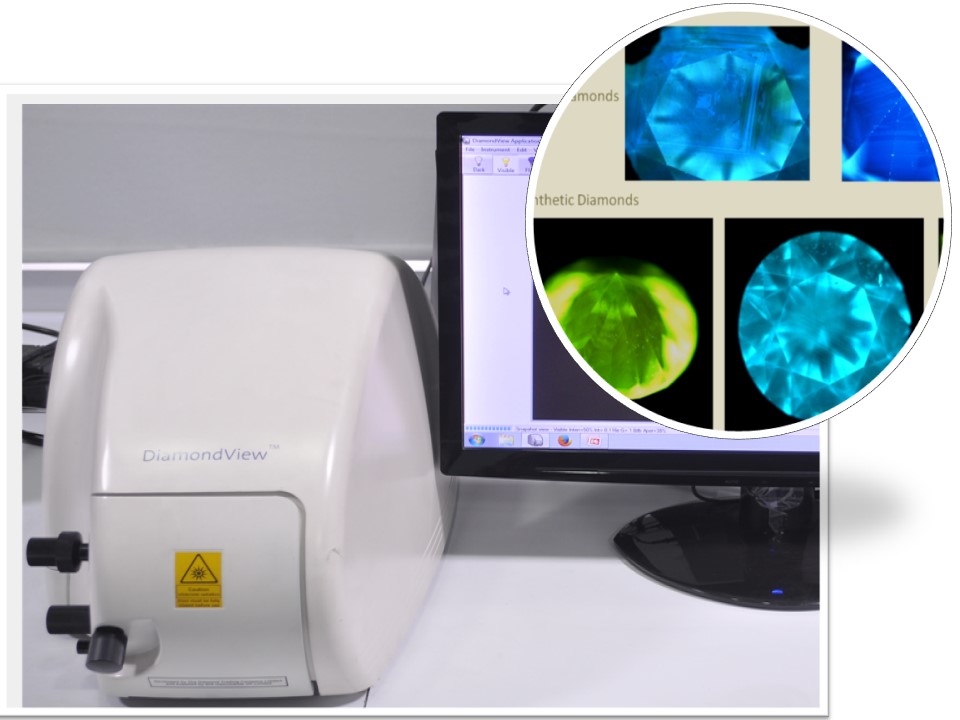
Ultraviolet Imaging ‘Diamondview™’
DiamondViewTM is a proprietary imaging system, which uses the short-wave ultraviolet light below ~225 nm. The fluorescent reactions are observed through a CCD camera, which display them on the monitor through software. It helps in studying the growth pattern of the sample’s surface or sub-surface up to few microns. It also assists in observing 'phosphorescence' of a sample.
DiamondViewTM is specifically created to study and separate synthetic (lab-grown) from natural diamonds based on its fluorescence and growth patterns.

SynthDetect™
Another screening equipment developed by DeBeers Group Industry Services for separation of natural and synthetic (lab-grown) diamonds. At IIGJ-RLC, this screening instrument is used to screen diamonds mounted in jewellery before they are graded. In addition to mounted diamonds, SynthDetect™ is also used to screen packets of polki-cut loose diamonds.
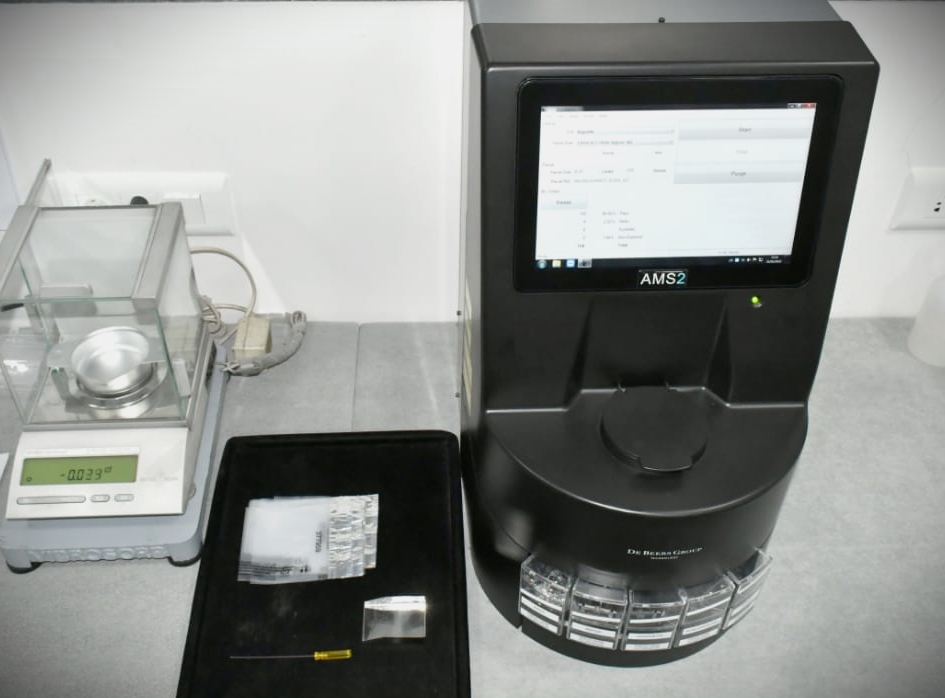
Automated Melee Screening Machine (AMS2TM)
AMS2TM from DeBeers Group Industry Services is an automated screening machine keeps the cost of analysis low, in otherwise challenging colourless to near-colourless star- and melee-sized diamond packets. Its high speed and accuracy enable us to screen packets of star-and melee-sized diamonds, thereby offering the service at much cheaper costs.
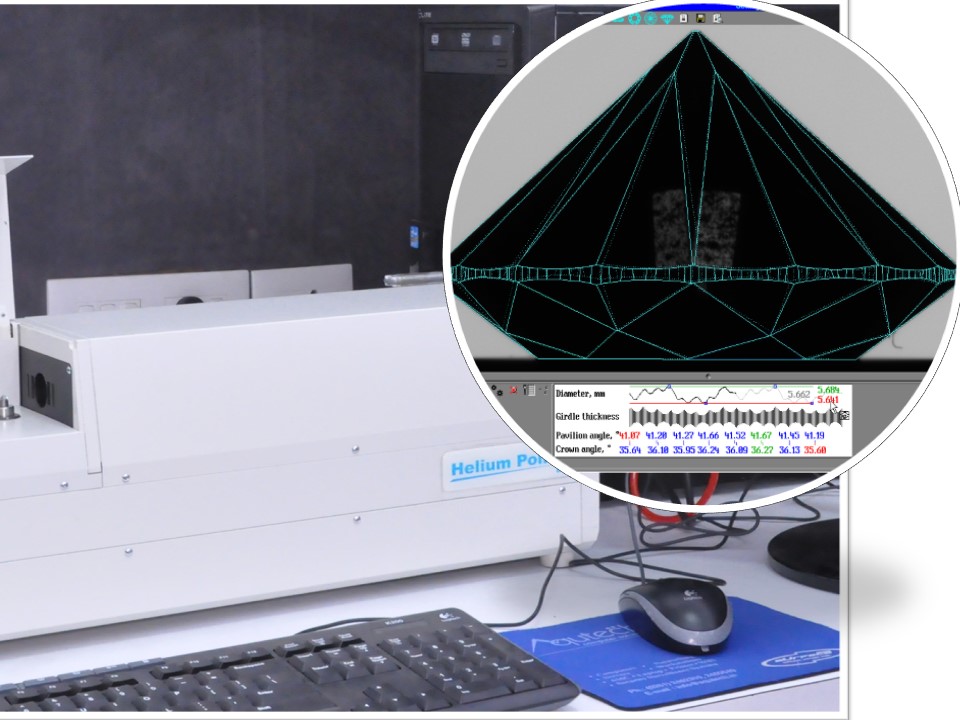
Diamond Cut Scanner
The scanner basically measures dimensions of cut & polished diamond and gemstones, where it scans angles of inclination and position of each facet and measures each facet edge to create a 3D wireframe model. The software calculates exact proportions and symmetry of a cut diamond, thereby providing information on the performance of light within a cut diamond. The scanner is used at the IIGJ-RLC for every diamond being submitted for grading, to determine its exact cut proportions.
Our Services

Origin Services
In addition to the gemmological analyses by a highly skilled and experienced team of gemmologists, and the use of various advanced spectrometers, origin reports are based on chemical fingerprinting using Laser Ablation-Inductively Coupled Plasma-Mass Spectrometry (LA-ICP-MS). IIGJ RLC is the first and only gem lab in the country with this state-of-the-art analytical equipment.
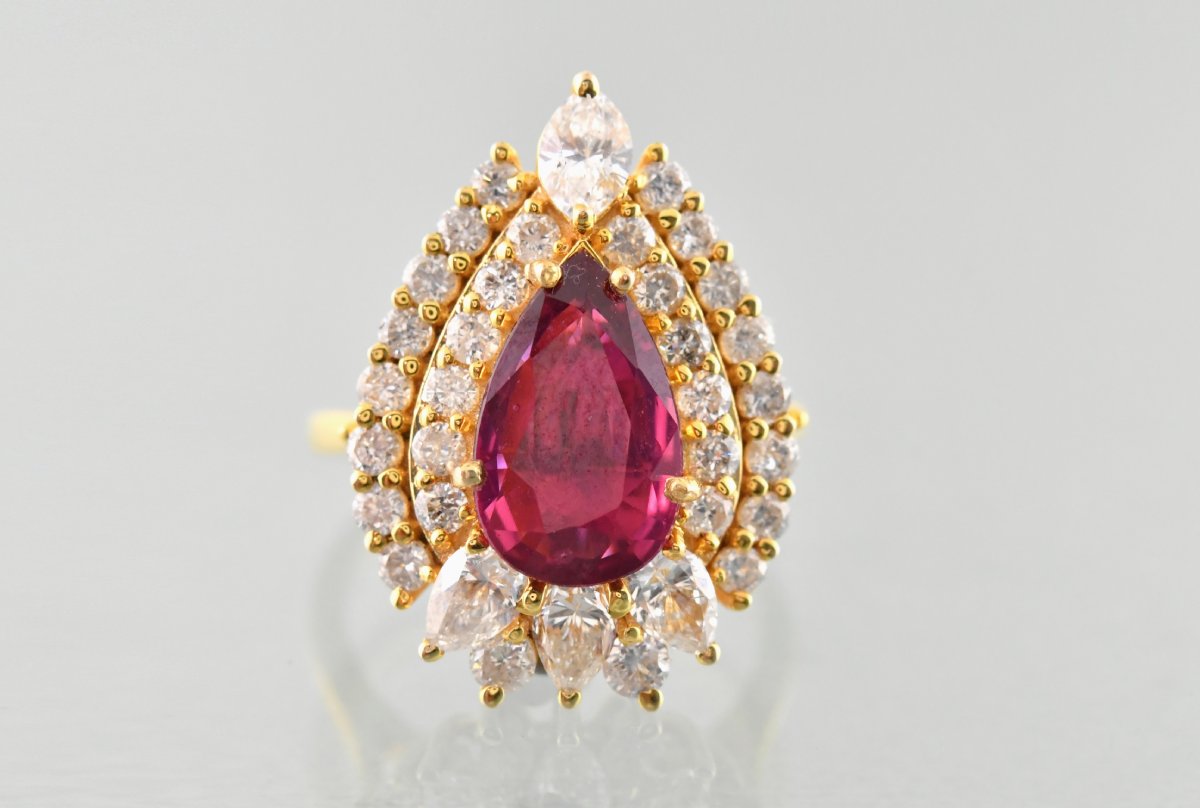
Jewellery Screening
Whether it is a single gemstone or multiple gemstones of the same type, or various types of gemstones mounted in a single piece of jewellery, or a decorative item, IIGJ RLC’s jewellery reports cover all aspects in a single report. Our unbiased approach in mounted diamond grading makes our lab one to search for.

Diamond
Diamond reports cover various aspects of a diamond from identification and separation of natural diamond from synthetic (lab-grown) or imitation diamond and detection of treatments, to determination of quality grades, whether mounted or loose.
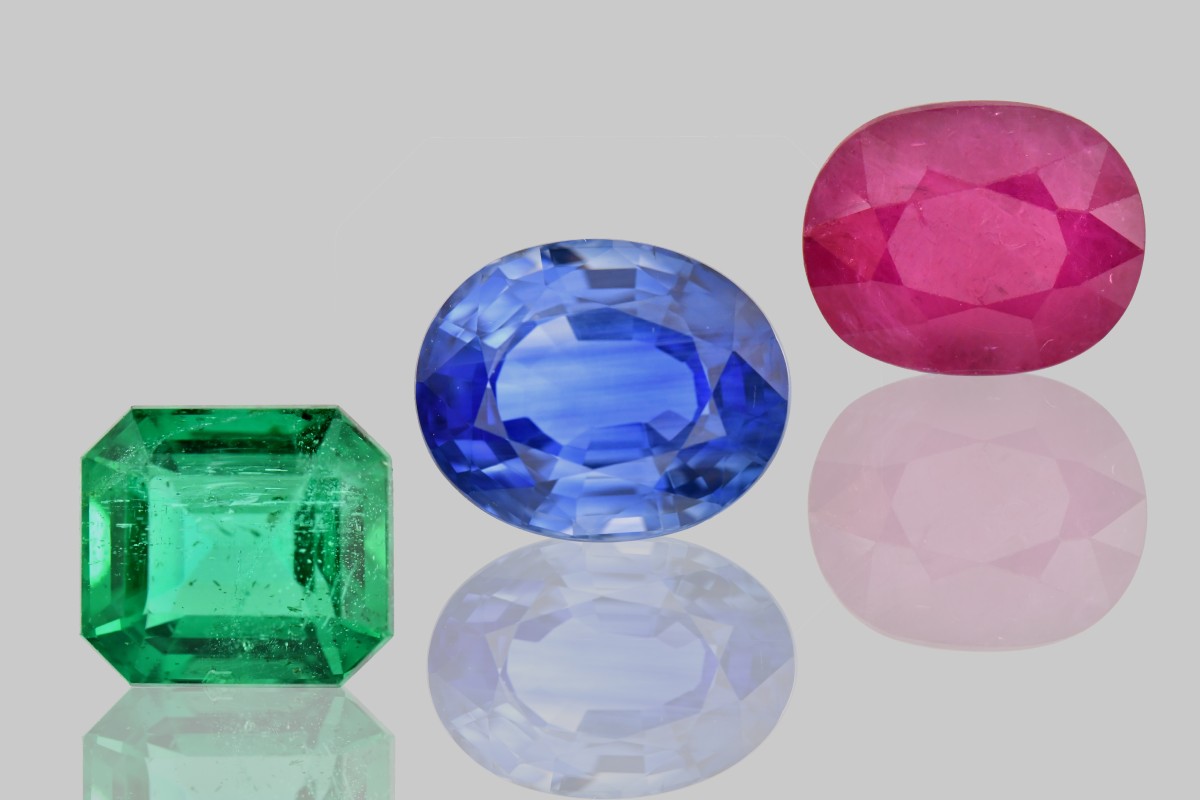
Coloured Gemstone
IIGJ-RLC offers gemmological reports for majority of gemstones available in the market, based on vast gemmological experience of the gemmologists along with scientific facts drawn from various advanced spectrometers.
Board of Directors
Gallery
